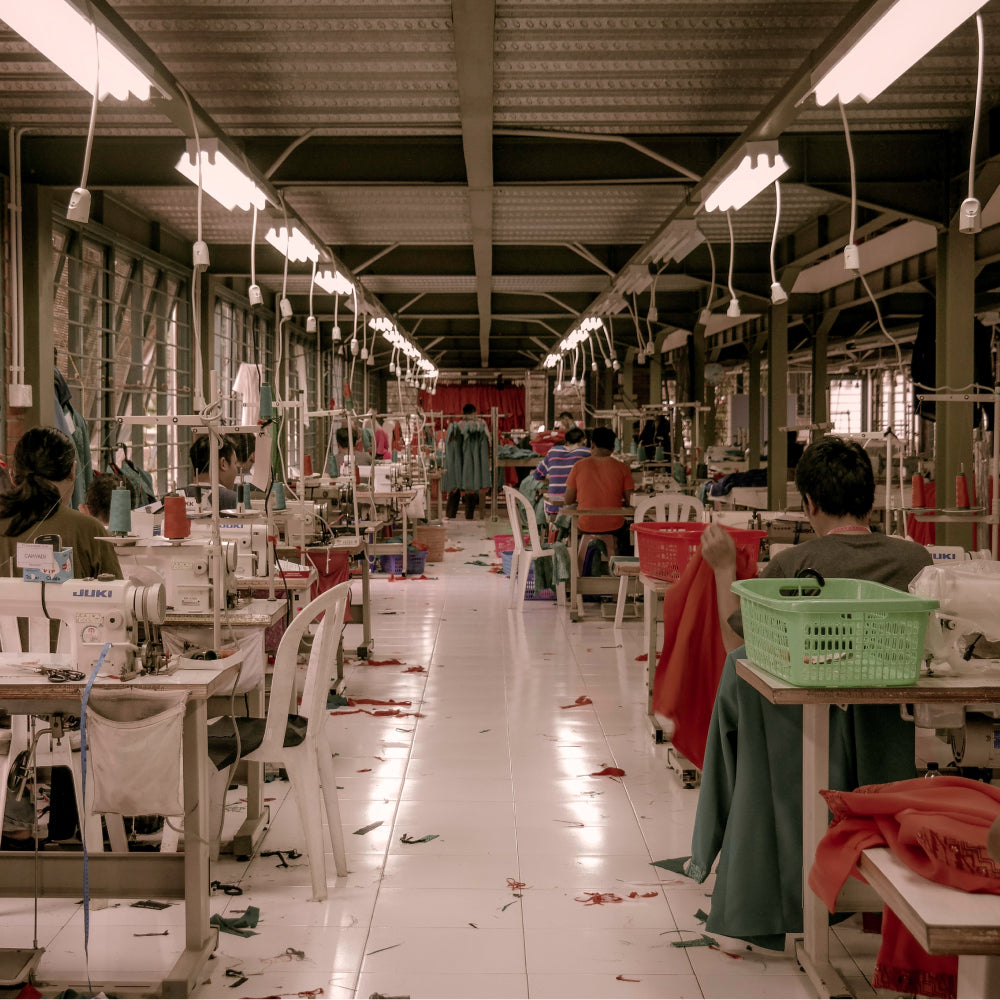In the last two weeks I visited different manufacturing companies in Austria and Germany in the textile and apparel industry and in the automotive industry.
The companies have one thing in common, they can keep and expand their production sites by using technology close to their headquarters. The advantages are obvious: greater flexibility in production, better quality, shorter lead times, greater know-how not only about their own processes but about the entire product. Companies that have organized their production in remote manufacturing plants are at a distinct disadvantage in this respect.
Success through in-house production close to the consumer markets
For some time now, I have observed that companies that have a high in-house production component in the apparel industry, i.e. that operate plants locally or at least in Europe, achieve higher prices and have a greater chance of achieving quality and price leadership. If you are also able to cover multiple manufacturing stages, this position improves significantly.
However, the challenge lies in the availability of technology: In this context, the question arises whether the apparel industry is important enough for Europe to be a production location, or are we resigning ourselves to the fact that most of the industry has already migrated anyway? In addition, there is the currently prevailing mood in the highly developed countries of Europe that there is a shortage of skilled workers at all corners and ends anyway. Bringing back an industry that has long since migrated abroad does not seem to be a sensible plan.
Jobs must be attractive
It is precisely in the design of future jobs that the greatest opportunity for our industry lies. The interaction between people and technology must lead to young people developing an interest in this work. To date, work in the textile and apparel industry has not been attractive because it resembles classic assembly line work and is often monotonous.
Special machines that handle individual production steps with a high degree of automation already exist.
Further development in three areas
In my opinion, what is missing in apparel manufacturing, and where technology development is most important, is optimization in the areas of material flow and machine feed, and small batch capability (size and color adjustments).
Most automatic machines today still have to be controlled manually. Textile parts are prepared and fed to the machine by employees with great manual skills. There is little to be said against the use of robots in this area, but there is still a mindset that defines the handling of textile fabrics as difficult "for robots".
The second direction of development must be the reduction of changeover times for size or color changes, which today still mean that most automatic machines are able to process orders with large series quantities even faster, but are no longer efficient enough when faced with the challenge of smaller production quantities. Changeover times are too high for this.
The use of AI in the control of the different automats and thus an optimization of the sequence planning must also be developed.
Lack of pressure from the industry
The adherence to now traditional approaches, according to which clothing production takes place primarily in countries with cheap wage levels, has a negative impact on future technology developments. There are too few market participants who have a genuine interest in bringing manufacturing back to the vicinity of their company locations, i.e. also to the vicinity of consumer markets. However, as long as the pressure from industry does not become stronger, few automation steps will be feasible.
Fields of action for small companies
All the factors involved in the development and technologization of the industry seem too big for a small company to make a difference. And of course - everyone has to develop further, recognize and take on their responsibility, so that a holistic change for the better takes place. Still, there are choices you can make, even as a small company, to consciously point in the right direction. At BREDDY'S, we produce in Europe in collaboration with small family businesses out of conviction. By 2030, we also want to automate some work steps in order to be able to realize small batch production and more specific customer requests. What's the point? If only what is really needed is produced, then in the end not only is less waste left over, which relieves the planet, but the object, in our case the BREDDY'S pants, fit our customers even better and accompany them even longer.
With our planned automation we strive for a win-win situation for planet and people!
How do we do that?
In order to make our big goals come true, we attach great importance to a close exchange with our production partners and retailers, and we also participate in research cooperations in the areas of textile production and process optimization.
And last but not least, of course, we do what we always do: Tinkering and thinking how to improve constantly, as a company, service provider and producer.
The companies have one thing in common, they can keep and expand their production sites by using technology close to their headquarters. The advantages are obvious: greater flexibility in production, better quality, shorter lead times, greater know-how not only about their own processes but about the entire product. Companies that have organized their production in remote manufacturing plants are at a distinct disadvantage in this respect.
Success through in-house production close to the consumer markets
For some time now, I have observed that companies that have a high in-house production component in the apparel industry, i.e. that operate plants locally or at least in Europe, achieve higher prices and have a greater chance of achieving quality and price leadership. If you are also able to cover multiple manufacturing stages, this position improves significantly.
However, the challenge lies in the availability of technology: In this context, the question arises whether the apparel industry is important enough for Europe to be a production location, or are we resigning ourselves to the fact that most of the industry has already migrated anyway? In addition, there is the currently prevailing mood in the highly developed countries of Europe that there is a shortage of skilled workers at all corners and ends anyway. Bringing back an industry that has long since migrated abroad does not seem to be a sensible plan.
Jobs must be attractive
It is precisely in the design of future jobs that the greatest opportunity for our industry lies. The interaction between people and technology must lead to young people developing an interest in this work. To date, work in the textile and apparel industry has not been attractive because it resembles classic assembly line work and is often monotonous.
Special machines that handle individual production steps with a high degree of automation already exist.
Further development in three areas
In my opinion, what is missing in apparel manufacturing, and where technology development is most important, is optimization in the areas of material flow and machine feed, and small batch capability (size and color adjustments).
Most automatic machines today still have to be controlled manually. Textile parts are prepared and fed to the machine by employees with great manual skills. There is little to be said against the use of robots in this area, but there is still a mindset that defines the handling of textile fabrics as difficult "for robots".
The second direction of development must be the reduction of changeover times for size or color changes, which today still mean that most automatic machines are able to process orders with large series quantities even faster, but are no longer efficient enough when faced with the challenge of smaller production quantities. Changeover times are too high for this.
The use of AI in the control of the different automats and thus an optimization of the sequence planning must also be developed.
Lack of pressure from the industry
The adherence to now traditional approaches, according to which clothing production takes place primarily in countries with cheap wage levels, has a negative impact on future technology developments. There are too few market participants who have a genuine interest in bringing manufacturing back to the vicinity of their company locations, i.e. also to the vicinity of consumer markets. However, as long as the pressure from industry does not become stronger, few automation steps will be feasible.
Fields of action for small companies
All the factors involved in the development and technologization of the industry seem too big for a small company to make a difference. And of course - everyone has to develop further, recognize and take on their responsibility, so that a holistic change for the better takes place. Still, there are choices you can make, even as a small company, to consciously point in the right direction. At BREDDY'S, we produce in Europe in collaboration with small family businesses out of conviction. By 2030, we also want to automate some work steps in order to be able to realize small batch production and more specific customer requests. What's the point? If only what is really needed is produced, then in the end not only is less waste left over, which relieves the planet, but the object, in our case the BREDDY'S pants, fit our customers even better and accompany them even longer.
With our planned automation we strive for a win-win situation for planet and people!
How do we do that?
In order to make our big goals come true, we attach great importance to a close exchange with our production partners and retailers, and we also participate in research cooperations in the areas of textile production and process optimization.
And last but not least, of course, we do what we always do: Tinkering and thinking how to improve constantly, as a company, service provider and producer.


